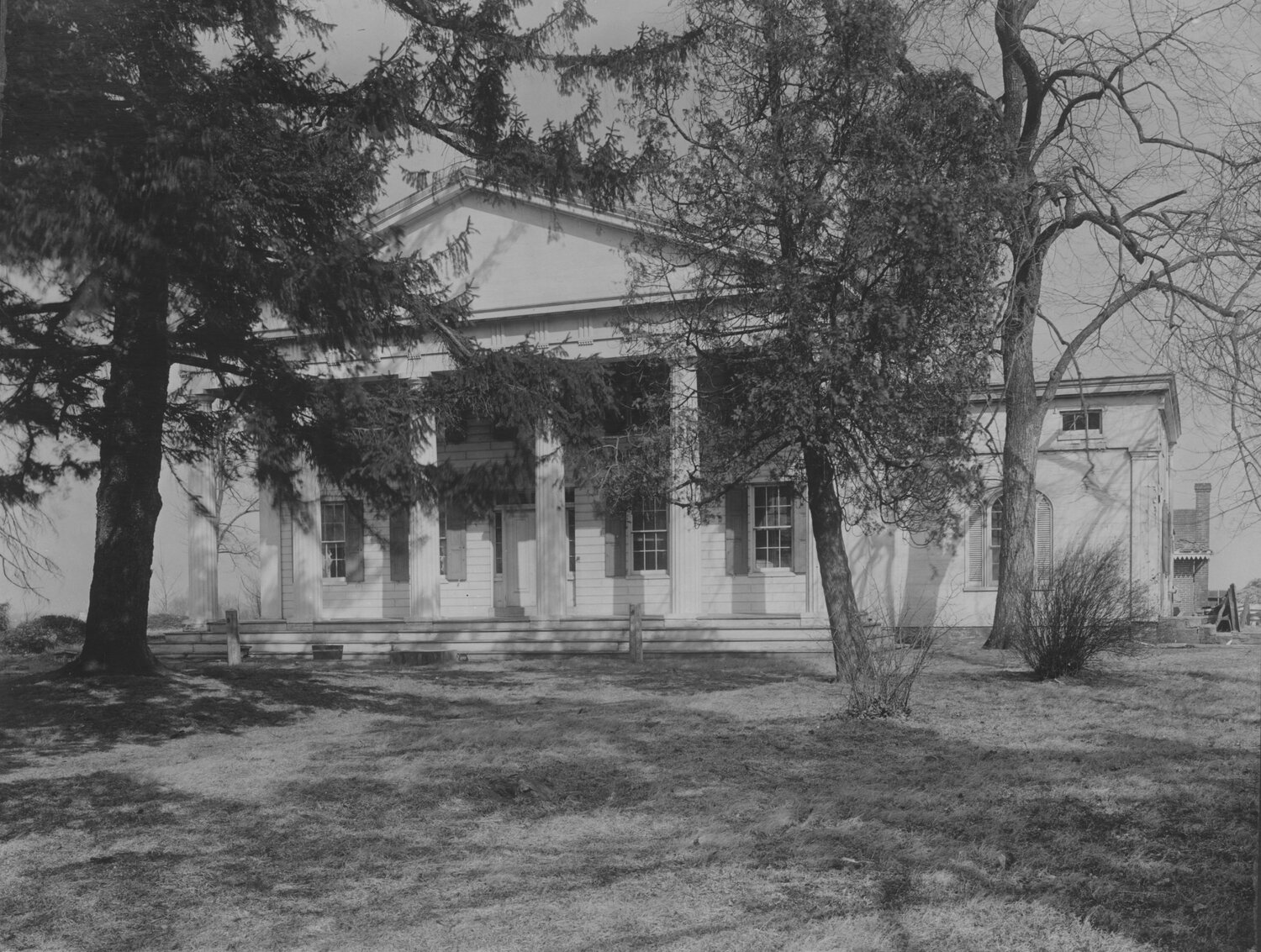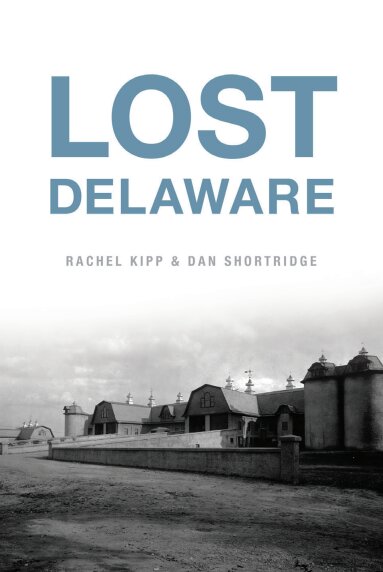‘Lost Delaware’ book brings back memories of First State lore
DOVER — Writing books together for Dover-based authors Dan Shortridge and Rachel Kipp is a lot like their marriage, a partnership where both sides work to make it successful.
They recently …

You must be a member to read this story.
Join our family of readers for as little as $5 per month and support local, unbiased journalism.
Already a member? Log in to continue. Otherwise, follow the link below to join.
Please log in to continueNeed an account?
|
‘Lost Delaware’ book brings back memories of First State lore
Hockessin BookShelf, Hockessin, March 24, 3-4 p.m.
Book talk, Delaware Historical Society, Wilmington, April 20, 2 p.m.
Browseabout Books, Rehoboth Beach, May 18, 3-5 p.m.
Book talk, Bethany Beach Books, June 29, 6-7:30 p.m.
 By Mike Finney
By Mike Finney
DOVER — Writing books together for Dover-based authors Dan Shortridge and Rachel Kipp is a lot like their marriage, a partnership where both sides work to make it successful.
They recently released their latest work, “Lost Delaware,” in which they went in search of places in the First State that eventually faded into history, leaving behind only memories and lore.
From the booths of the legendary Kirby and Holloway Restaurant in Dover to the Diamond State Drive-In movie theater in Felton, the former journalists traveled to all three counties.
“We decided to do something about the stories of the past,” Ms. Kipp said. “So, preserving stories of places that are no longer here, but are still integral with Delaware’s history.
“Telling those stories for those who didn’t know them and reminding some folks who maybe had been to some of them and remember them, giving them some more insight into the stories behind them. It really opened up a lot of things that we could write about.”
The final product was a 176-page book filled with lost memories.
It includes stories of Delaware’s forgotten POW camps — at Fort DuPont, Slaughter Beach, Georgetown, Harbeson and Harrington — that held thousands of German and Italian prisoners during World War II who were sent out across the state to work in fields and factories.
It also chronicles the history of many other disappeared Delaware institutions, including the last whipping post, the Nanticoke language, the Woodlawn mansion and the Hartmann & Fehrenbach brewery.
“We began with an idea for each item,” said Mr. Shortridge. “Some of them didn’t work out so well because we couldn’t find enough information on them. But with others, it was really detective work. We had to sort through a lot of different articles from the past to pull together all that you needed to tell a little story about it.
“We did a lot of digging in books, newspaper articles. We really couldn’t have written this book without the work of the people who came before us. The journalists and the stories … their work was absolutely critical in helping put it all together.”
Once they got the bulk of the research finished for each of their sections of the book, that’s where the teamwork kicked in.
“Writing is really a partnership,” said Mr. Shortridge. “We’re married and we get that partnership to work there. We both have different approaches to writing, different stories that we enjoy digging into.
“For example, I did a lot of the Sussex County items because that’s where I grew up. Rachel did a lot of the New Castle County items because that’s where she worked and lived for so many years. Plus, we both live in Kent County right now so that was a fun thing to do.”
The pair then passed the manuscript back and forth, reading it and editing it.
“Lost Delaware” traces state history throughout several areas, including agriculture, food, business, medicine, religion, mansions, transportation and schools.
First State favorites
Both Ms. Kipp and Mr. Shortridge had certain stories that left a real impression on them.
“A good example of that is Kahunaville (on Wilmington’s Riverfront), which is the Children’s Museum now, and I knew what it used to be before but hadn’t really delved into all of the stories behind it,” Ms. Kipp said. “How it really kind of helped revitalize a nightlife scene in Wilmington. So, it was nice to look into some of these kinds of things.
“For example, drive-in movies. There are a couple of former drive-ins down in Kent County that I know that’s what they used to be but didn’t really know the story behind them. The Diamond State Drive-In was really interesting to learn about the evolution of that place.”
She also enjoyed writing about Brandywine Springs, near Newport.
It has gone from a Revolutionary War encampment for George Washington’s Army, to a resort area in the 1800s where wealthy people in Wilmington and others — such as John Quincy Adams and Daniel Webster — would visit before it evolved into an amusement park in the early 20th century.
Ms. Kipp said the ever-changing landmark shows “the evolution of vacation time within American society,” as it went from a place where people would go for a day trip to a spot now where people go to walk their dogs for a couple of hours.
“One of the other ones I really enjoyed writing about was the former Kirby and Holloway Restaurant in Dover, which burned down a couple of years ago,” she said. “It had some interesting political history. Joe Lieberman, when he was campaigning, actually filmed a part of a campaign commercial there.
“Then there was also a Delaware lieutenant governor in the 1970s, who I found in a newspaper article, about how he held his usual news conference at Kirby and Holloway’s restaurant.”
One of the stories that Mr. Shortridge researched was the tale of the “Delaplane.”
“It was Delaware’s first Delaware-built, home-built aircraft,” he said. “It was designed and built by a guy (Robie Seidelinger) back in the early 1910s who was a typewriter company manager. He was a model-plane enthusiast who had not built a full-scale plane before.
“(The plane) was made out of wood and cotton. It cost about $6,000 back in that time, which was an incredible amount. It flew a couple of times, but it eventually burned in 1911 when lightning struck a storage barn (at a rifle ranch near New Castle) and set the whole thing on fire. That was a fascinating story.”
Mr. Shortridge said there’s only one photograph that’s known to exist of the Delaplane and that is in the Delaware Historical Society, which granted them permission to publish it.
This is the couple’s third co-authored book about First State attractions, which remains a passion of theirs.
“Telling the stories of these vanished stores, restaurants and schools draws attention to moments in Delaware history which are still relevant today,” said Ms. Kipp. “Whether it’s vanished rail lines, fallen lighthouses or closed muskrat-serving restaurants, we’re aiming to draw attention to our forgotten past and make sure it stays alive.”
It can be purchased anywhere book are sold or arcadiapublishing.com. A portion of the authors’ proceeds will be donated to Preservation Delaware, an organization dedicated to the preservation of the state’s architectural heritage and historic settings.
Staff writer Mike Finney can be reached at 302-741-8230 or mfinney@iniusa.org.
Follow @MikeFinneyDSN on X.
Members and subscribers make this story possible.
You can help support non-partisan, community journalism.
Other items that may interest you











